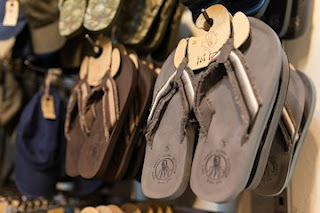Once
upon a time, all a writer had to do to get started was bang off a good article
to a local newspaper or magazine, and if the Editor thought it had a bit of
something, you’d be asked to write more. They’d even pay you for it. That’s
what happened to me with Record Mirror.
In the flush of invincible youth, I took it upon myself to interview Stephen ‘Tin
Tin’ Duffy, simply because I fancied him, and then sent the article around to
see who would take it. Thankfully, RM’s Editor at the time, thought it was good
enough to print, and paid me £50 for it. Otherwise I might have had some
explaining to do to Stephen, who had promised to deflower me when he got back
off tour (note: he reneged)…
However,
since the advent of the internet, and with so much good copy available for
nothing but a subscription to an ISP, writing has become more of a hobby – even
for formerly paid journalists like myself. There are some pretty good, and
indeed, pretty well-known writers out there blogging because they can’t get
published, and more often than not, that’s because they’ve never been on reality
television.
Indeed,
it seems that unless you’re a former topless ‘model’ or Big Brother contestant, you can forget ever actually being engaged
to write a column for a publication.
Without celebrity though, what would it take to get a salaried
job on a newsstand publication now?
Possibly
moving back to London, banging on doors, sleeping rough with a four-pack of
Sainsbury’s Basics lager outside Vogue House, making a nuisance of myself - not
choosing instead to live in the New Forest, just so I can hang out with feral ponies.
It
would probably also take at least a red-brick degree in ‘Meejah’ Studies (as
opposed to a dog-eared and completely useless Diploma in Law), along with a willingness to intern for a local rag, whilst living
at home with martyred parents paying all the bills (not an option – they’re
long dead, and as we were always struggling to make the rent, I never got off paying my share anyway).
You
also need a fairly fervent belief that the world not only needs your opinion, but
that it should give a toss about it.
It
comforts me just a little that some of the best writers on the New Musical Express when I was reading
it back in the day had absolutely none of the above. That if all these had been
the criteria back in the 1970s and early 1980s, we’d never have heard of Nick Kent,
Julie Burchill, or Chrissie Hynde. As a matter of interest, Julie Burchill
started her career at just 17, responding to an advert in the NME for “hip young gunslingers” to write
about what was then the newly emerging Punk scene. She clinched it just with a
review of Patti Smith’s ‘Horses’ album. Nice one. Chrissie Hynde got her job on
the paper just by hanging out with Nick Kent. Even nicer one.
 |
| Julie Burchill Raven and Tony Parsons - just after they joined the New Musical Express |
It’s
true that most of the old hacks we love and revere, and who do still make a
living without going into the Jungle on television to eat bugs for plastic
stars, or getting their norks out for the lads, do have Oxbridge degrees, but
they’re not degrees in Social Studies or Media, they’re usually in Politics,
English, or Art.
Mostly
Art.
The
angry Art School dropout with a WHSmith typewriter, a packet of Woodbines, a
box of Swan Vestas, and a load of multisyllabic opinions to challenge the
reader to try harder and wish they’d paid more attention in comprehension, seems
all but extinct.
At
least with blogging, one is not subject to the red pen of the Sub-Editor, and
whilst you won’t get paid for your work, at least you can rest safe in the
knowledge that it is your work. Every
word of it. I still flinch reliving the misunderstandings that arose from various
subs taking a chainsaw to my finely crafted masterpieces, and destroying
relationships I had built with cranky interviewees on whom I had worked off my
crushed velvet butt to win over.
These
days, it seems the best, and indeed, only avenue for the ambitious unknown is
to get a book published. Preferably about teen witches or bondage. I did hope
to try the latter, announcing to my mother at the age of 23 that I was going to
write a book “just like what Jackie Collins writes…”
“But
darling, you’d have to write about sex.” She said, uncertainly.
“Yeah?
So?” I rejoined defiantly.
“But
you don’t know enough about it.”
She
hit her mark like an Agincourt long-bowman. I never did write a raunchy book. I
am, however, currently writing a time-slip novel about ghosts, which has a
beginning and an ending, but no middle quite yet.
While
I try to think of one, as I was briefly a celebrity when I was a kid, I am available for any planned “Where Are They Now?”
Shows on Sky…
 |
| Bernard Hill as Yosser Hughes in 'The Boys from the Black Stuff' (1982): "Gissa job..." |
©
Emmeline Wyndham - 2016






